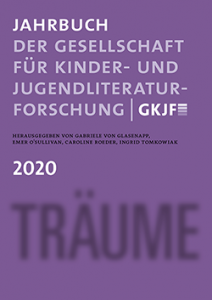Tannengrund und Wald
Brüchige Kindheit in Ludwig Tiecks »Die Elfen« und E.T.A. Hoffmanns »Das fremde Kind«
DOI:
https://doi.org/10.21248/gkjf-jb.57Abstract
Artikelbeginn:
[English title and abstract below]
In Ludwig Tiecks Die Elfen (1812) und E.T.A. Hoffmanns Das fremde Kind (1817) nehmen Naturräume eine zentrale Position ein. Insbesondere der Wald ist als ein Kindheitsraum besetzt, der ambivalent konnotiert ist. Im Wald können sich die kindlichen Figuren fernab der Eltern autonom bewegen, dennoch geht diese Raumaneignung auch mit bedrohlichen Erfahrungen einher, die die aufstörenden Ablösungsprozesse in der Kindheit verdeutlichen.
Into the Woods
Constructions of Fragile Childhood in Ludwig Tieck’s Die Elfen and E.T.A . Hoffmann’s Das fremde Kind
In Die Elfen (1812) by Ludwig Tieck and Das fremde Kind (1817) by E.T.A. Hoffmann, natural spaces occupy a central position in terms of the spatial semantic field of the texts. As a narrative element, they fulfil complex functions that go beyond the mere spatial dimension. The forest, in particular, is rendered as a childhood space with ambivalent connotations and functions. Although the childlike figures can move autonomously within the forest – far away from their parents – this spatialisation is nevertheless accompanied by threatening experiences that reflect the disturbing process of detachment from childhood. This article examines the spatial construction of Hoffmann’s and Tieck’s texts by rereading both literary fairy tales from a topographical perspective in order, on the one hand, to trace the spatial semantic order (Yuri Lotman) and interstices (Michel Foucault) and, on the other, to discuss the associated notions of childhood. It also seeks to make recent German-language research on Romanticism, which has been informed by cultural studies, productive for children’s and young adult literature research. The idea of Romantic childhood as a utopia must, in the wake of the work of Detlef Kremer and Andreas Kilcher, be differentiated and brought into line with current research on Romanticism.
Downloads
Veröffentlicht
Ausgabe
Rubrik
Lizenz
Copyright (c) 2021 Jahrbuch der Gesellschaft für Kinder- und Jugendliteraturforschung

Dieses Werk steht unter der Lizenz Creative Commons Namensnennung - Nicht-kommerziell 4.0 International.





